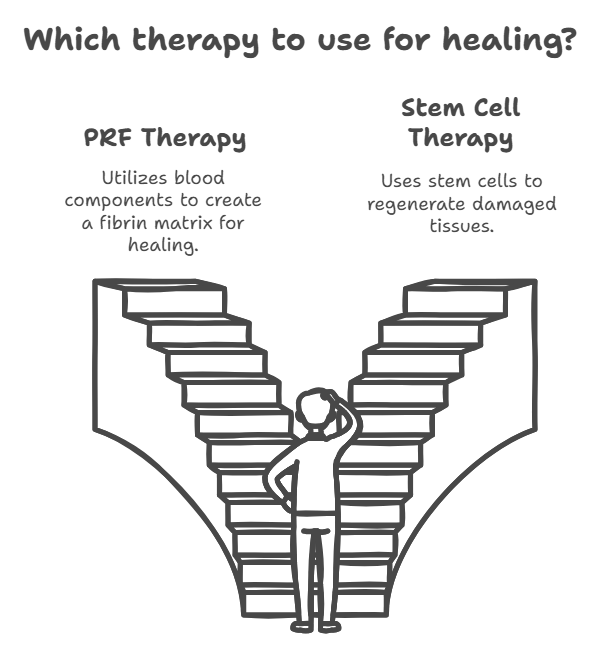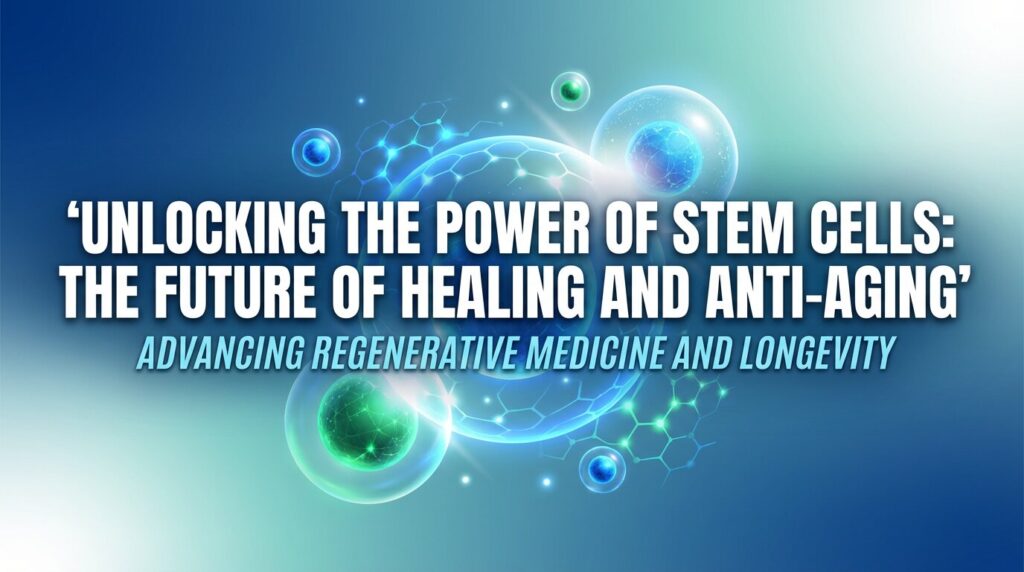Have you ever wondered how our bodies heal themselves?
It’s like watching a superhero regenerate after a battle! In the world of medicine, treatments like PRF therapy and stem cell therapy are tapping into that natural healing power.
But what’s the difference between these two treatment options? Let’s dive in and explore!
What is PRF Therapy?
Imagine your blood as a rich garden, full of nutrients that can help heal wounds and regenerate tissue. PRF, or Platelet-Rich Fibrin, is like gathering the most potent seeds from that garden.
PRF therapy involves taking a small sample of your blood, spinning it in a centrifuge to create a fibrin clot, and then using that to promote healing.

How Does PRF Therapy Work?
PRF contains high concentrations of platelets, white blood cells, and fibrin, which are key players in the healing process.
When applied to an injury site, these components form a fibrin network that acts like a scaffold, supporting tissue regeneration and attracting growth factors and cytokines.
What is PRP Therapy?
PRP, or Platelet-Rich Plasma, is a cousin of PRF. It’s another therapy that uses your own blood to heal injuries.
In PRP, the blood is spun in a centrifuge at a higher speed, which separates the platelets and plasma from other components.
PRP vs PRF: What’s the Difference?
When considering PRP vs PRF, it’s important to note that PRP is spun at higher speeds, which can remove some beneficial cells.
PRP also requires an anticoagulant like acid citrate dextrose to prevent clotting.
Unlike PRP, PRF allows a clot to form, creating a more robust fibrin scaffold for healing.
What is Stem Cell Therapy?
Think of stem cells as the body’s master builders. They have the unique ability to develop into different cell types, helping to repair and regenerate damaged tissues.
Stem cell therapy involves harvesting these cells and injecting them into areas that need healing.
Stem Cells Regenerate Tissues
Adult stem cells used in stem cell therapy have the ability to become various cell types, aiding in tissue repair.
These stem cells regenerate damaged areas by differentiating into the needed cell types.
PRF Therapy vs Stem Cell Therapy: The Key Differences

While both therapies aim to harness the body’s own healing mechanisms, they do so in different ways.
PRF therapy uses components like platelets, fibrin, and growth factors from your own blood to create a fibrin matrix that supports healing.
On the other hand, stem cell therapies use mesenchymal stem cells or hematopoietic stem cells to regenerate damaged tissues.
Benefits and Applications
PRF therapy has been widely used in dentistry and plastic surgery, thanks to its ability to accelerate wound healing and reduce inflammation.
It has shown promising results in promoting new blood vessels formation and collagen production.
Stem cell therapy, meanwhile, is used for a variety of conditions, from orthopedic injuries to chronic diseases, as it can help regenerate damaged tissues.
How is PRF Prepared?
The preparation of PRF is relatively simple.
A sample of your blood is taken and placed in a centrifuge. The centrifugation process is slower and shorter than that of PRP, allowing the formation of a fibrin clot without the use of anticoagulants.
This results in the final PRF product, which contains a fibrin matrix rich in platelets, white blood cells, and growth factors.
Why Choose PRF Over PRP?
Many healthcare providers prefer PRF over PRP because it is a more natural product.
PRF does not require any anticoagulants or additives; it’s simply your own blood components working for you.
Additionally, PRF forms a fibrin clot that acts as a scaffold, slowly releasing growth factors and supporting cell types involved in healing.
The Role of Platelets and Fibrin in Healing
Platelets are tiny cell fragments in your blood that are essential for clotting and wound repair.
They contain growth factors that signal other cells to help in the healing process.
Fibrin is a protein that forms a mesh-like structure, creating a clot that stops bleeding and provides a framework for new tissue to grow.
Understanding Fibrin and Plasma
Fibrin is a protein that, along with platelets, forms a clot to stop bleeding.
Plasma is the liquid part of your blood, carrying cells and proteins throughout the body.
In PRF therapy, the combination of platelets, fibrin, and plasma creates a powerful healing cocktail.
Why is Platelet Concentration Important?
A higher concentration of platelets means more growth factors can be delivered to the injury site.
In PRF therapy, the platelet concentration is increased, creating a platelet-rich fibrin matrix that enhances healing.
How Do Platelets Release Growth Factors?
When platelets become activated, they release growth factors that signal other cells to begin repairing damaged tissue.
In PRF therapy, the slow release of these factors due to the fibrin matrix leads to sustained healing effects.
Combining Platelets and Stem Cells
Some therapies combine platelets and white blood cells with stem cells to enhance healing.
The platelets and growth factors in PRF can create an optimal environment for the stem cells to function.
Studies using PRP and PRF have shown promising results in tissue regeneration.
Using PRP in Therapy
The use of PRP has been widespread in sports medicine and orthopedics.
The application of PRP involves injecting it into injured areas to promote healing.
Using PRP can reduce recovery times and improve outcomes.
PRF in Plastic Surgery
In plastic surgery, PRF therapy is used to enhance healing and reduce scarring.
The placement of the PRF can improve tissue quality by delivering essential cell types, including blood cells and stem cells, to the surgical site.
Choosing Between PRF and Stem Cell Therapy
Choosing between PRF therapy and stem cell therapy can feel like picking the right tool from a toolbox—both are useful, but one might be better suited for the job at hand.
PRF therapy is often preferred for its simplicity and effectiveness in promoting natural healing with minimal invasiveness.
It’s especially popular in dental procedures and minor injuries.
Stem cell therapy, being more complex, is suitable for more severe conditions where significant tissue regeneration is needed.
Final Thoughts
At the end of the day, both PRF therapy and stem cell therapy are exciting treatment modalities in regenerative medicine.
They harness the body’s own healing power, much like turning on your internal repair shop.
Whether it’s the platelets and growth factors in PRF or the powerful stem cells, these therapies offer effective treatment options to help you get back on your feet.



